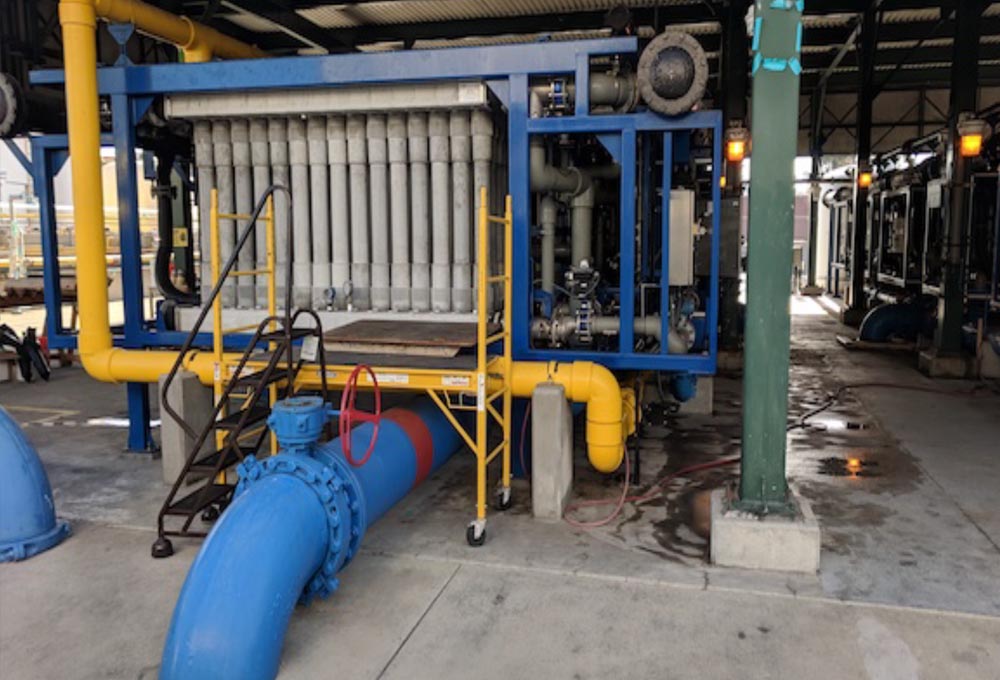Summary
The Terminal Island Water Reclamation Plant (TIWRP) is a wastewater treatment plant serving industrial, commercial, and residential users in the city of Los Angeles and operated by the city’s Bureau of Sanitation. Built in 1935, TIWRP had originally been designed to discharge treated wastewater into Los Angeles Harbor. In 1977, state regulators ordered the plant to phase out harbor discharges, leading to a two phase renovation by the Bureau of Engineering to turn the plant into a water recycling facility. During Phase 1, completed in 2001, a plant capable of producing 6 million gallons of recycled water per day (MGD) was built, along with a pipeline distribution system. During Phase 2, a 50 million dollar project completed in 2017, the plant’s production capacity was increased to 12 MGD of recycled water, and a new and improved method of water recycling was instituted. The water produced is distributed to a number of users in the area as a replacement for imported potable water. Water users include the Dominguez Gap Barrier Project to prevent seawater intrusion into groundwater (8 MGD), Machado Lake for water level augmentation (0.5 MGD), Harbor area for process water (0.5 MGD), and Los Angeles Harbor area for irrigation (0.5 MGD). The new Terminal Island facility marks an important development in the City’s goals to recycle all of its wastewater by 2035, use recycled water for useful purposes, and reduce the need for imported potable water.
Research director
Prof. Spiro Pollalis
Research core team
John Daley, ENV-SP • Judith Rodriguez, ENV-SP
Case study written by
John Daley, ENV-SP • Judith Rodriguez, ENV-SP







